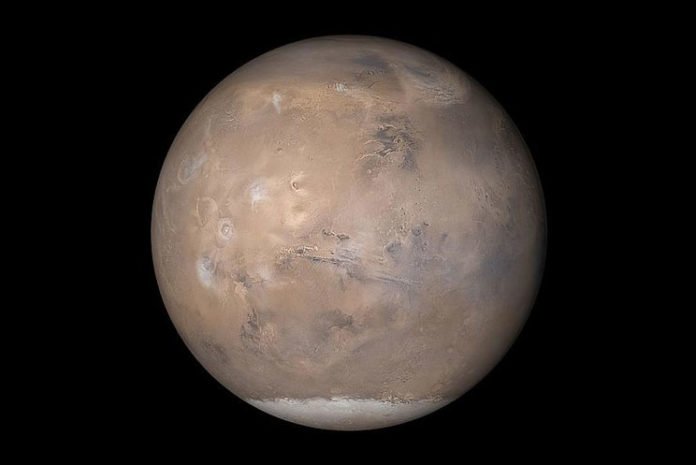A team of scientists at Caltech and the Jet Propulsion Laboratory (JPL), which Caltech manages for NASA, has calculated that water exists on Mars could contain more Oxygen than previously thought possible in specific conditions.
According to the model, the levels of oxygen could even theoretically exceed the threshold required to endorse a simple aerobic life.
Current study results run contradictorily as the acknowledged view of Mars and its potential for hosting habitable environments. In study so far the existence of liquid water on Mars is not given. Also, researchers have discarded the thought of its existence considering that it might be oxygenated.
Since it is given that Mars’s atmosphere is about 160 times thinner than that of Earth and is mostly carbon dioxide.
Woody Fischer, professor of Geobiology at Caltech, said, “Oxygen is a key ingredient when determining the habitability of an environment, but it is relatively scarce on Mars.”
JPL’s Vlada Stamenković, the lead author of the study, added, “Nobody ever thought that the concentrations of dissolved oxygen needed for aerobic respiration could theoretically exist on Mars.”
Investigating the existence of liquid water on Mars id one of the prime aims of NASA’s Mars Program. Endorsing this study recently data from a European spacecraft have suggested that liquid water may lie beneath a layer of ice at Mars’s south pole.
In addition to this, it has also been hypothesized that water possibly exists in salty subsurface pools since perchlorate salts (compounds of chlorine and oxygen) have been traced at various places on Mars.
Salt is recognized to lower the freezing point of water, which denotes the strong possibility of water with perchlorate in it could potentially stay liquid despite the freezing temperatures on Mars. Also, it has been noticed the summer nights on the equator can still dip down to -100 degrees Fahrenheit.
This hypothetical salty water is what intended scientists. Oxygen enters the water from the atmosphere, diffusing into the liquid to manage an equilibrium between the water and the air. If salty water were close enough to the surface of the Martian soil, then it could effectively absorb oxygen from the thin atmosphere.
To trace the Oxygen quantity absorbed scientists attempted two things; First, they developed a chemical model describing how oxygen dissolves in salty water at temperatures below the freezing point of water. And the second they investigated the global climate of Mars and how it has changed over the past 20 million years, during which time the tilt of the axis of the planet shifted, altering regional climates.
The solubility and climate models combined and permitted the researchers to infer which regions on Mars are most capable of sustaining high oxygen solubilities, both today and in the planet’s geologically recent past.
The scientists traced, at low-enough elevations (where the atmosphere is thickest) and at low-enough temperatures (where gases like oxygen have an easier time staying in a liquid solution), surprisingly have a high amount of oxygen in the water which is more than the threshold quantity required for aerobic respiration in Earth’s oceans today.
Additionally, the locations of those regions have shifted as the tilt of Mars’s axis has altered over the past 20 million years. During that time, the highest oxygen solubilities have occurred within the past five million years.
Stamenković said, “The findings could inform future missions to Mars by providing better targets to rovers searching for signs of past or present habitable environments.”
The findings of this study are published in the journal Nature Geoscience.
